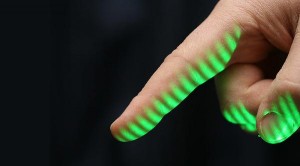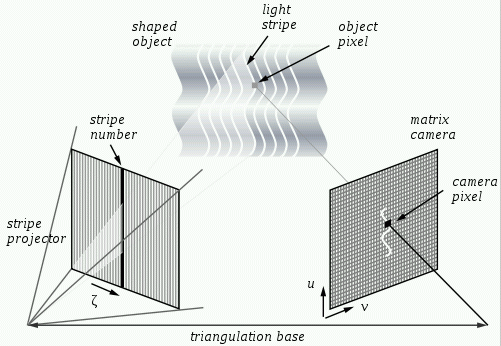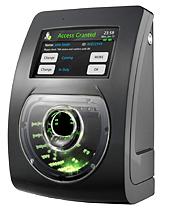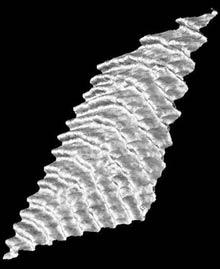3D fingerprints
The technique of fingerprinting has not changed much over the past 60 years, despite the transition to digital scanners. Fingerprints are still taken, stored and compared in two-dimensional form. And this is a big problem, because it often leads to false positives. In professional journals for forensic experts, the percentage of false positives is estimated at 0.8%, and in some years up to 4.4%,  but the authorities prohibit disclosing these statistics so as not to question the reliability of identification by fingerprints, because even tenths of a percent is hundreds of unfair convictions. One way or another, but fingerprint technology clearly needs to be improved.
but the authorities prohibit disclosing these statistics so as not to question the reliability of identification by fingerprints, because even tenths of a percent is hundreds of unfair convictions. One way or another, but fingerprint technology clearly needs to be improved.
Some time ago, the US Department of Homeland Securitygave grants to several dozen private companies that promised to introduce contactless fingerprinting technology in three-dimensional form. Two startups succeeded in this: Flashscan 3D (a subsidiary of the University of Kentucky) and TBS Holdings (from Carnegie Mellon University).
Both companies use the scanning method with structured light , that is, a grid of light lines, which can be used to reflect a three-dimensional model.

Three-dimensional scanning allows you to greatly speed up the procedure (scanners from both manufacturers spend less than one second on a finger, and in the future, developers promise to increase the speed to 0.1 s, so that it will be possible to scan all ten fingers at a time), reduces the scrap during scanning (since there is no contact with the scanner, there is no risk of contaminating the surface of the glass or greasing the print by accidentally jerking a finger). The scanner manufactured by TBS Holdings looks like this.

TBS Holdings has released two versions of the scanner: single-finger and ten-finger. True, the ten-finger actually works in two passes, because it scans the thumbs separately.
A 1.4-megapixel camera is hidden inside the Flashscan scanner, which gives a resolution of about 150 pixels per square centimeter. The scan quality of both manufacturers is also approximately the same.
The fingerprint is stored in the database as a three-dimensional model.

Interestingly, such images are fully compatible with the existing FIS database AFIS (Automatic Fingerprint Identification System), for this program Flashscan can specially flatten 3D models to a flat look.
via Singularity Hub
 but the authorities prohibit disclosing these statistics so as not to question the reliability of identification by fingerprints, because even tenths of a percent is hundreds of unfair convictions. One way or another, but fingerprint technology clearly needs to be improved.
but the authorities prohibit disclosing these statistics so as not to question the reliability of identification by fingerprints, because even tenths of a percent is hundreds of unfair convictions. One way or another, but fingerprint technology clearly needs to be improved. Some time ago, the US Department of Homeland Securitygave grants to several dozen private companies that promised to introduce contactless fingerprinting technology in three-dimensional form. Two startups succeeded in this: Flashscan 3D (a subsidiary of the University of Kentucky) and TBS Holdings (from Carnegie Mellon University).
Both companies use the scanning method with structured light , that is, a grid of light lines, which can be used to reflect a three-dimensional model.

Three-dimensional scanning allows you to greatly speed up the procedure (scanners from both manufacturers spend less than one second on a finger, and in the future, developers promise to increase the speed to 0.1 s, so that it will be possible to scan all ten fingers at a time), reduces the scrap during scanning (since there is no contact with the scanner, there is no risk of contaminating the surface of the glass or greasing the print by accidentally jerking a finger). The scanner manufactured by TBS Holdings looks like this.

TBS Holdings has released two versions of the scanner: single-finger and ten-finger. True, the ten-finger actually works in two passes, because it scans the thumbs separately.
A 1.4-megapixel camera is hidden inside the Flashscan scanner, which gives a resolution of about 150 pixels per square centimeter. The scan quality of both manufacturers is also approximately the same.
The fingerprint is stored in the database as a three-dimensional model.

Interestingly, such images are fully compatible with the existing FIS database AFIS (Automatic Fingerprint Identification System), for this program Flashscan can specially flatten 3D models to a flat look.
via Singularity Hub
